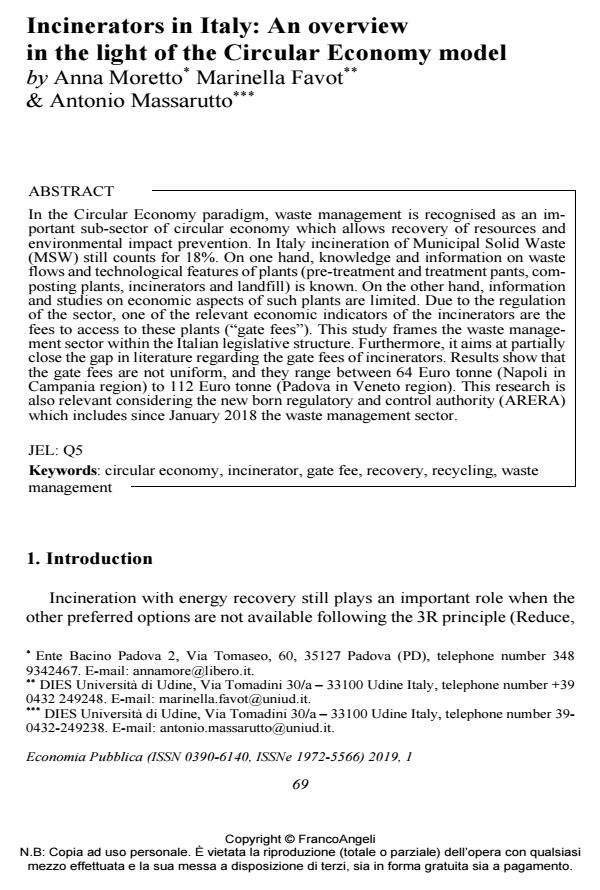Incinerators in Italy: An overview in the light of the Circular Economy model
Titolo Rivista ECONOMIA PUBBLICA
Autori/Curatori Anna Moretto, Marinella Favot, Antonio Massarutto
Anno di pubblicazione 2019 Fascicolo 2019/1
Lingua Inglese Numero pagine 20 P. 69-88 Dimensione file 230 KB
DOI 10.3280/EP2019-001004
Il DOI è il codice a barre della proprietà intellettuale: per saperne di più
clicca qui
Qui sotto puoi vedere in anteprima la prima pagina di questo articolo.
Se questo articolo ti interessa, lo puoi acquistare (e scaricare in formato pdf) seguendo le facili indicazioni per acquistare il download credit. Acquista Download Credits per scaricare questo Articolo in formato PDF

FrancoAngeli è membro della Publishers International Linking Association, Inc (PILA)associazione indipendente e non profit per facilitare (attraverso i servizi tecnologici implementati da CrossRef.org) l’accesso degli studiosi ai contenuti digitali nelle pubblicazioni professionali e scientifiche
In the Circular Economy paradigm, waste management is recognised as an important sub-sector of circular economy which allows recovery of resources and environmental impact prevention. In Italy incineration of Municipal Solid Waste (MSW) still counts for 18%. On one hand, knowledge and information on waste flows and technological features of plants (pre-treatment and treatment pants, composting plants, incinerators and landfill) is known. On the other hand, information and studies on economic aspects of such plants are limited. Due to the regulation of the sector, one of the relevant economic indicators of the incinerators are the fees to access to these plants ("gate fees"). This study frames the waste management sector within the Italian legislative structure. Furthermore, it aims at partially close the gap in literature regarding the gate fees of incinerators. Results show that the gate fees are not uniform, and they range between 64 Euro tonne (Napoli in Campania region) to 112 Euro tonne (Padova in Veneto region). This research is also relevant considering the new born regulatory and control authority (ARERA) which includes since January 2018 the waste management sector.
Parole chiave:Circular economy, incinerator, gate fee, recovery, recycling, waste management
Jel codes:Q5
- Economic regulation of waste management utilities: Taking stock of the Italian reform Antonio Massarutto, in ECONOMICS AND POLICY OF ENERGY AND THE ENVIRONMENT 2/2021 pp.5
DOI: 10.3280/EFE2020-002001 - A new framework for policy evaluation: Targets, marine litter, Italy and the Marine Strategy Framework Directive Piero Morseletto, in Marine Policy 103956/2020 pp.103956
DOI: 10.1016/j.marpol.2020.103956
Anna Moretto, Marinella Favot, Antonio Massarutto, Incinerators in Italy: An overview in the light of the Circular Economy model in "ECONOMIA PUBBLICA " 1/2019, pp 69-88, DOI: 10.3280/EP2019-001004